|
|
|
Sort Order |
|
|
|
Items / Page
|
|
|
|
|
|
|
| Srl | Item |
| 1 |
ID:
104901
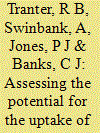

|
|
|
|
|
| Publication |
2011.
|
| Summary/Abstract |
We report on an assessment of the potential for energy production from on-farm anaerobic digestion (AD) in England based on findings from a survey of farmers where it was found that around 40% of 381 respondents might install AD on their farms. These 'possible adopters' tended to have large farms and might together utilise some 6560 ha of land for feedstock production along with the wastes from some 12,000 beef and dairy cattle and 9000 pigs. When raised to the national level, such a level of AD activity would produce around 3.5 GWh of electricity. This approximates to just 0.001% of national electricity generation. Further, there are considerable perceived barriers to the widespread adoption of AD on farms in England; these include the high capital costs of installing AD and doubts about the economic returns being high enough.
|
|
|
|
|
|
|
|
|
|
|
|
|
|
|
|
| 2 |
ID:
112254


|
|
|
|
|
| Publication |
2012.
|
| Summary/Abstract |
The current status and legal framework of biogas production in Portugal are analyzed and compared to that of five other European countries, characterized by wide-ranging diversity of substrates and biogas applications. With this comparison, and with the calculation of the biogas energy potential in Portugal, the authors want to assess the significance of developing the Portuguese biogas sector. This study illustrates that the highest biogas feed-in tariffs are applied in the countries with a more developed sector. In Portugal, despite the fact that the organic effluents are a relevant energy source (873 Mm3 biogas per year; 4889 GW h yr-1) and that new feed-in tariffs were established, biogas valorisation is still at an early stage. The importance of anaerobic digestion was only recognized in 2007 and the present installed power is about 10% of the potential electrical power (229 MW). Therefore, it is desirable to strengthen the national and regional biogas market.
|
|
|
|
|
|
|
|
|
|
|
|
|
|
|
|
| 3 |
ID:
115179


|
|
|
|
|
| Publication |
2012.
|
| Summary/Abstract |
Previous experience has demonstrated the tenuous nature of biomass energy projects located at livestock facilities in the U.S. In response, the economic sustainability of a 710 kW combined heat and power biomass energy system located on a dairy farm in California was evaluated. This biomass energy facility is unique in that a complete-mix anaerobic digester was used for treatment of manure collected in a flush-water system, co-digestates were used as additional digester feedstocks (whey, waste feed, and plant biomass), and the power plant is operating under strict regulatory requirements for stack gas emissions. Electricity was produced and sold wholesale, and cost savings resulted from the use of waste heat to offset propane demand. The impact of various operational factors was considered in the economic analysis, indicating that the system is economically viable as constructed but could benefit from introduction of additional substrates to increase methane and electricity production, additional utilization of waste heat, sale of digested solids, and possibly pursuing greenhouse gas credits. Use of technology for nitrogen oxide (NOx) removal had a minimal effect on economic sustainability.
|
|
|
|
|
|
|
|
|
|
|
|
|
|
|
|
| 4 |
ID:
117333


|
|
|
|
|
| Publication |
2013.
|
| Summary/Abstract |
Anaerobic digestion is increasingly recognized for its ability to produce renewable energy and reduce greenhouse gas emissions from livestock operations. In 2010, there were 2645 U.S. dairy farms with herd sizes large enough to support anaerobic digesters, yet only 156 systems were in operation (U.S. Environmental Protection Agency (U.S. EPA), 2010a. Market Opportunities for Biogas Recovery Systems at U.S. Livestock Facilities. AgSTAR Program; U.S. Environmental Protection Agency (U.S. EPA), 2011. Operational Anaerobic Digesters, Sorted by State (Dairy). AgSTAR Program.).1 This study analyzes the net present value of digester systems under alternative electricity purchase agreements and how returns are affected by standby charges, net metering policies and the use of feed-in-tariffs. In order for digester potential to be fully realized on a state or national level, changes to distributed energy policy are required. Results indicated that standby charges can reduce revenues from offsetting electricity by an average of nearly 20%. Net metering rules limit participation among larger farms and negatively affect profitability by restricting engine-generator size. Lastly, the effectiveness of a fixed price feed-in-tariff policy for digesters is significantly affected by project size differentiation. Digester energy policies are similar nationwide, making this study useful for government regulatory agencies and digester owners throughout the U.S.
|
|
|
|
|
|
|
|
|
|
|
|
|
|
|
|
| 5 |
ID:
186410
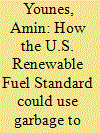

|
|
|
|
|
| Summary/Abstract |
The U.S. Renewable Fuel Standard (RFS) is a key federal program shifting the nation's transportation fuel mix towards lower-carbon alternatives. A 2014 update to the standard included certain types of renewable electricity as qualifying fuels, supporting vehicle electrification within the RFS for the first time. This study investigates the potential under existing regulatory authority to expand deployment of low-carbon waste-to-electricity pathways, yielding revenue that could be used to subsidize electric vehicle (EV) sales or to support other RFS-aligned climate and transport-sector goals. We find that by accounting for drivetrain efficiency in credit allocation and creating a centralized entity to accrue credits, the RFS could generate $8.7 to $24 billion in revenues annually that could be used to provide EV subsidies of $3600 to $9200 or to otherwise accelerate transport electrification. The economic potential for qualifying waste-derived bioelectricity production could meet EV fleet demand to at least 2029. Absent a federal Low Carbon Fuel Standard, or other technology-neutral fuel policy, the RFS could effectively support widespread vehicle electrification. Expansion of waste-derived electricity could mitigate or increase pollutant exposure for some populations, so policy design and implementation must pay close attention to environmental health, justice, and equity.
|
|
|
|
|
|
|
|
|
|
|
|
|
|
|
|
| 6 |
ID:
098652
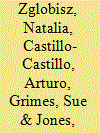

|
|
|
|
|
| Publication |
2010.
|
| Summary/Abstract |
Anaerobic digestion (AD) has the potential to contribute to greenhouse gas emissions reductions, improve energy security, increase generation of decentralised renewable electrical and thermal energy, produce low-impact fertiliser and enhance adherence to the principles of proximity as well as self-sufficiency in waste treatment, in energy generation and in resource use. Financial viability is scrutinised investigating optimal logistic pre-conditions such as catchment area or plant size. Given that a breakthrough in deployment does not only depend on technical aspects, the relative importance and magnitude of the necessary incentives is discussed. The influence of policy instruments is studied by devising different incentive scenarios for the United Kingdom. Substantial and predictable rewards for renewable electricity and heat are essential to harness the full potential of AD in addition to the current emphasis on landfill tax. A possible configuration of energy supply companies as a crucial vehicle to bring anaerobic digestion to market is highlighted.
|
|
|
|
|
|
|
|
|
|
|
|
|
|
|
|
| 7 |
ID:
150772


|
|
|
|
|
| Summary/Abstract |
Feed-in tariffs and Renewable Portfolio Standards (RPS) are among the most prominent policies to address anthropogenic influence on climate change. Implementation of RPS favorably affects renewable energy supply and rural development while reducing the land available for meeting demand for food and feed resulting from global population growth. Even in the vast Great Plains of the United States, land requirements are primary considerations between increasing renewable energy capacity and food and feed production.
|
|
|
|
|
|
|
|
|
|
|
|
|
|
|
|
| 8 |
ID:
125712
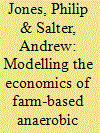

|
|
|
|
|
| Publication |
2013.
|
| Summary/Abstract |
Anaerobic digestion (AD) technologies convert organic wastes and crops into methane-rich biogas for heating, electricity generation and vehicle fuel. Farm-based AD has proliferated in some EU countries, driven by favourable policies promoting sustainable energy generation and GHG mitigation. Despite increased state support there are still few AD plants on UK farms leading to a lack of normative data on viability of AD in the whole-farm context. Farmers and lenders are therefore reluctant to fund AD projects and policy makers are hampered in their attempts to design policies that adequately support the industry. Existing AD studies and modelling tools do not adequately capture the farm context within which AD interacts. This paper demonstrates a whole-farm, optimisation modelling approach to assess the viability of AD in a more holistic way, accounting for such issues as: AD scale, synergies and conflicts with other farm enterprises, choice of feedstocks, digestate use and impact on farm Net Margin. This modelling approach demonstrates, for example, that: AD is complementary to dairy enterprises, but competes with arable enterprises for farm resources. Reduced nutrient purchases significantly improve Net Margin on arable farms, but AD scale is constrained by the capacity of farmland to absorb nutrients in AD digestate.
|
|
|
|
|
|
|
|
|
|
|
|
|
|
|
|
| 9 |
ID:
150042
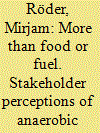

|
|
|
|
|
| Summary/Abstract |
Anaerobic digestion (AD) is of growing importance within the UK as it can make an important contribution to the countries energy and climate change targets. With the growth of the sector, discussions about competing land uses are likely to increase. For a better understanding of the synergies between agricultural land, its role and bioenergy the perception of the different stakeholders will play an important role. The perception of stakeholders related to AD, feedstock and energy crop production was investigated through interviews and a stakeholder workshop. The results indicated that from an AD operator and feedstock producer perspective, on-farm AD is more an additional activity integrated into existing agricultural systems than a renewable energy technology. The risk of a shift in agricultural practices and large areas to grow energy crops for AD is seen as low for the UK. Nonetheless, land use and related challenges need to be considered as the demand for AD feedstocks increases with the fast growth of the sector. Considering the synergies between bioenergy and agriculture as well as the motivations and benefits perceived by stakeholders will play an important role in a successful policy design to provide the required emission reduction in both sectors without subverting sustainability.
|
|
|
|
|
|
|
|
|
|
|
|
|
|
|
|
| 10 |
ID:
178810
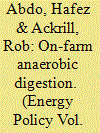

|
|
|
|
|
| Summary/Abstract |
In recent years, the multifunctionality of farming activities and diversification of on-farm income sources have increasingly included renewable energy generation. The uptake of on-farm anaerobic digestion (AD), however, continues to lag behind other renewable energy activities. Moreover, on-farm AD is not only a source of renewable energy, but also a means of farm waste management and thus a means of enhancing environmental quality. This paper provides an in-depth analysis of the policy barriers that might explain this limited uptake, and identify key directions for future AD policy design. We draw on a mixed-methods research design, with data collected by questionnaires, interviews and a round-table workshop of stakeholders. We analyse our data using a framework that disaggregates ‘policy’ into meta, meso and micro levels of Policy Means and Policy Ends. We conclude that future policy must recognise the synergies between on-farm AD as a source of renewable energy and as a means of waste management, reflected in instrument mix and instrument calibration. Calibration-stability is also found to be of critical importance. We also offer new insights and understanding around the application of our chosen policy framework, notably how it can analyse policies that are nested within large, complex policy systems.
|
|
|
|
|
|
|
|
|
|
|
|
|
|
|
|
|
|
|
|
|